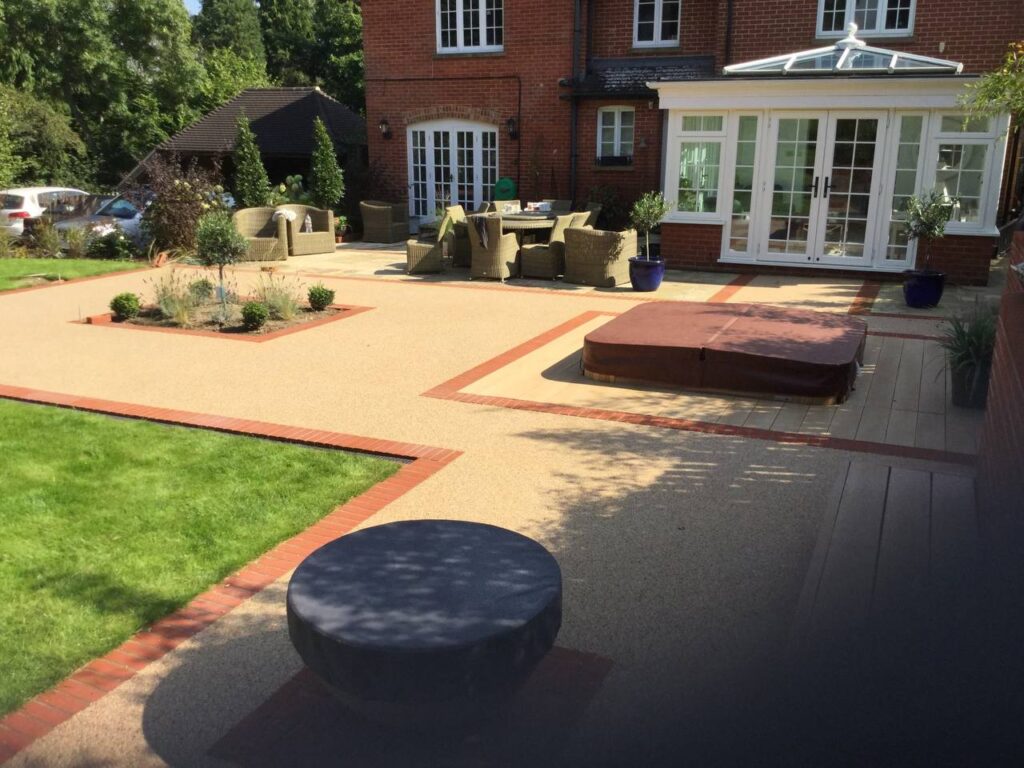Block Paving Issues Every Homeowner Should Watch Out For
Block paving driveways are a popular choice for homeowners looking to enhance their property’s curb appeal and functionality. With their durability, variety of designs, and relatively low maintenance, it’s easy to see why block paving is a go-to option. However, like any paving material, block paving can experience certain issues over time that need attention to maintain its appearance and structural integrity. In this blog post, we’ll discuss the most common problems homeowners face with block paving and how to prevent or resolve them.
1. Weed Growth Between Blocks
One of the most common problems with block paving is the growth of weeds and moss between the blocks. These unwanted plants can not only affect the aesthetic of your driveway but can also lead to further damage over time.
Why It Happens: Weeds often grow through the joints between the blocks, taking advantage of any gaps or cracks in the sand or mortar. The organic material can also break down and get trapped in the joints, providing the perfect environment for plant growth.
How to Prevent It: Regular cleaning and sealing of the joints can prevent weeds from taking root. You can also apply weed killer to the surface to stop weeds from sprouting. However, ensure that the product you use is suitable for block paving and will not damage the surface. A professional sealing service is a great investment to keep your driveway free of weeds for longer.
2. Settling and Shifting Blocks
Over time, the blocks in a driveway can start to settle or shift, leading to uneven surfaces. This issue can be particularly noticeable in areas where vehicles frequently pass, or if the driveway is exposed to heavy rain.
Why It Happens: Settling and shifting typically occur when the ground beneath the paving isn’t properly prepared or compacted. If the sub-base isn’t properly installed or the edges of the blocks aren’t secured, movement and sinking can happen.
How to Prevent It: Proper installation is key to avoiding settling or shifting. Ensure that the sub-base is properly compacted, and the blocks are installed with enough depth to provide stability. Regular maintenance, including topping up the jointing sand, can also help prevent displacement of the blocks.
3. Staining and Discolouration
Block paving can be prone to staining and discolouration, especially in areas with high traffic or exposure to oil, fuel, or chemicals. Stains can make the driveway look tired and unkempt, detracting from the overall appearance of your property.
Why It Happens: Stains are often caused by spilled oil, fuel, rust, or other chemicals, which can seep into the surface of the blocks. Organic material, such as leaves or moss, can also leave marks on the paving if left for too long.
How to Prevent It: Regular cleaning is essential to preventing staining. Use a pressure washer or a suitable cleaning solution to remove any dirt, oil, or stains promptly. If the stains are persistent, a specialist stain remover designed for block paving can be used. Consider applying a sealant to your block paving once it has been cleaned, as it will help protect the surface from absorbing stains in the future.
4. Cracking or Breaking Blocks
While block paving is generally durable, it can still crack or break under certain conditions. Heavy loads, shifting foundations, or wear and tear can lead to broken or cracked blocks, which not only affect the look of your driveway but can also be a tripping hazard.
Why It Happens: Cracks in block paving can occur due to external pressure, improper installation, or moisture getting beneath the blocks. Freezing and thawing conditions can also cause blocks to shift or break, especially if the joints are not properly sealed.
How to Prevent It: Ensure that the blocks are installed with a suitable base and that there is enough space for expansion. If the driveway is subjected to heavy vehicles, it may be worth considering reinforcement or a thicker sub-base. Regular maintenance, including resealing, can also help prevent moisture from entering the joints and causing damage.
5. Efflorescence
Efflorescence refers to the white, chalky stains that can appear on block paving. While it does not damage the paving, it can be unsightly and affect the overall appearance of your driveway.
Why It Happens: Efflorescence is caused by salts that are carried to the surface of the blocks by moisture. This is a natural process, and while it may occur more in areas with higher rainfall, it can also happen in dry conditions due to humidity.
How to Prevent It: Efflorescence can usually be removed with a stiff brush and warm water. If the stains persist, you can use an efflorescence cleaner designed specifically for block paving. To prevent future occurrences, ensure that your driveway is properly sealed to protect the blocks from moisture.
Conclusion
Block paving is a fantastic choice for homeowners due to its durability, aesthetic appeal, and versatility. However, as with any surface, it is important to be aware of the potential issues that can arise and take proactive steps to prevent or address them. Regular cleaning, maintenance, and sealing can go a long way in extending the life of your block paving and ensuring your driveway looks its best for years to come.
If you’re facing issues with your block paving or need professional assistance in installing, repairing, or maintaining your driveway, don’t hesitate to contact NS Driveways Banstead. Our team of experts can provide reliable solutions to keep your driveway in top condition and add value to your home. Contact us today for a free consultation.
Call us on: 01737 926 997
Click here to find out more about NS Driveways Banstead
Click here to complete our contact form and see how we can help with your driveway needs.

